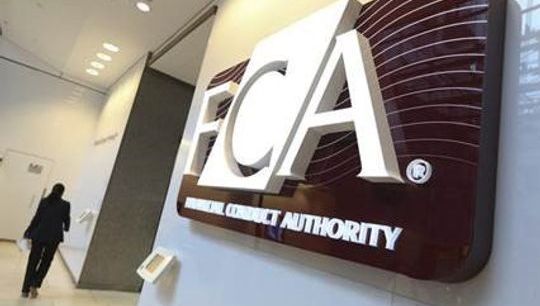The unfolding trade and transaction landscape
By Igor Kaplun; Ron Finberg, S&P Global Market Intelligence Cappitech
Published: 28 November 2022
Trade and Transaction reporting as part of the G20 regulatory mandate has been a market feature for 10 years now. No one could have predicted the complexity, cost and resources that would be required by the financial services industry, including asset managers, hedge funds and other buyside firms, to meet their trade and transaction reporting obligations. The industry is certainly better prepared, better organised and has more resources focused on regulatory change, however, we are still chasing the next new wave of regulatory change that is always just around the corner.
The upcoming regulatory reporting crunch
Over the next three years we will see significant changes to reporting requirements in the US, Canada, Europe, UK, Singapore, Australia, and Japan. In the US, the CFTC rewrite is just a month away, due to be implemented by the 5th December 2022, with the second phase of the CFTC rewrite is due in Q4 2023. Australian authorities have issued consultation on changes to their reporting rules with a target to go live in two phases – October 2023 and April 2024. Similarly, Canadian and Japanese regulators have changes targeted for H1 2024.
One regulation of particular concern for the buyside is the upcoming EMIR REFIT. The updated technical standards for the EMIR REFIT go live on the 29th April 2024. When EMIR was first introduced in 2014 many buyside firms initially opted to delegate their reporting obligations to their sell side counterparties as they didn't have all of the data, technology or internal processes to support the requirements. Over time many firms have realised that managing controls, reconciliation and ensuring the data being reported by their counterparties is accurate has proven to be costly and burdensome. While regulatory risk of complete, accurate and timely reporting is still a concern, there is a shift in the market with many firms now choosing to handle reporting themselves or partnering with technology providers.
With the date still far in the future, the question is how much preparation should be taking place now? While every firm’s scenario is different, it is prudent to start to focus on a number of key areas:
- New fields with new systems – Are you making internal changes such as replacing back-office systems or moving to an internal data lake? If yes, it’s worth checking how data capture of these systems fits with the field and lifecycle reporting obligations of the updated REFIT regulation. Special focus should be made on new asset specific fields.
- Lifecyle Events – Start examining the new types of Lifecycle Event being introduced. Examples include corporate events, derivative exercises and risk mitigation processes that are reported as part of a New, Modification and Termination message. Whether you are planning on using existing data sources or migrating to new ones, now is a good time to map how these lifecycles are captured and can be reported from company systems.
- Counterparty data – MIFID II introduced ‘No LEI, No Trade’. For EMIR REFIT, this trend continues as firms will need to collect more information about their counterparties and customers such as whether they are above clearing thresholds, their corporate sector and NFC/FC status. Being aware of what new data is required to be captured internally, and putting in place a plan to collect it, can be done now. This will reduce situations where transactions are unable to be reported in the future due to lack of data.
Data harmonisation and data quality
Needless to say, the industry will be busy for the next three years! But why all the changes? Ultimately, it’s all about data harmonisation and data quality. Because each regulator initially came up with their own rules, technical specifications and data formats, the result has been that the same trade is currently reported in different ways depending on the jurisdiction.
There has finally been the realisation that there has to be a better way: standardise the critical data elements (CDE) globally, ensure there is a standard unique product identifier (UPI) and have a common submission format (ISO 20022 XML). These consultations and rule changes are the result of that realisation with global regulators adopting similar standards across regimes. Regulators are also speaking with various industry working groups to better understand how they are capturing transaction and lifecycle events in their books and records and how this information fits into schemas for reporting. In addition, work has been done to adopt similar practices to the logic creation and distribution of unique trade identifiers (UTI) among participants.
How does this impact the buyside?
However, while the proposed changes mean unification of transaction reporting formats and processes, it also presents the industry with a massive problem: how to resource for all these regulatory projects, particularly when it appears there is no end in sight. For example, it is one thing to say that replacing the multiple existing CSV submissions with a more standardised XML format will improve efficiency and data quality, but it is another to uproot how trades are currently being reported and put in place new systems to support the changes. Similarly, there are years of bilateral agreements in place that cover responsibilities for delegated reporting and UTI sharing that may need to be updated and agreed upon between counterparties to comply with new UTI waterfall standards being introduced across multiple derivative reporting regimes such as EMIR, ASIC and MAS.
As the industry stares down the runway of projects for the next three years, and the three years after that and so on, many firms are asking the same questions about how to stay compliant and how to manage costs. Importantly, with numerous costs and requirements the industry needs to meet, there is a growing realisation that now more than ever it may not make sense for individual firms to own every aspect of regulatory reporting processes themselves.
Industry wide challenges need industry wide solutions, through a mutualised cost structure that allows a critical mass of clients to satisfy their reporting obligations through the same solution. This model works in trade processing, confirmations, clearing, payments and in many other corners of the capital markets. Trade and transaction reporting is certainly an area where this has proven to work and can help to drive reduced costs and lower long-term costs of ownership.
UTI enrichment
A great example of where this model of industry wide solutions can be effective is with UTI enrichment under SFTR. As a new regulation, many of the largest securities lending and repo dealers worked with IHS Markit (now S&P Global) and other solution providers to create systems to share and match UTIs between counterparties. Using these matching systems, reporting firms were able to have UTIs automatically enriched to their reports, greatly reducing the time spent populating UTIs and increasing the overall quality of UTI pairing rates. The 2021 EMIR and SFTR data quality report published by ESMA shows the EMIR pairing rates at 60% after 8 years of reporting but SFTR has achieved around 64% after 2 years of reporting. The SFTR reconciliation rates for loans, which is the next stage of matching after pairing, ended at 50% but there is no mention of this for EMIR.
Similarly, shared data can be used across EMIR and ASIC to allow companies to automatically enrich UTIs. Shared industry platforms can also be used to generate consensus opinions on the correct formatting of new lifecycle event fields and enriching UPIs.
The road ahead
In the last 10 years, the industry has worked endlessly to keep up with the wave of regulatory reforms across all major financial jurisdictions. It is difficult to say what the next 10 years will hold, but certainly in the next three years we will see an extremely busy regulatory agenda through rewrites and refits as well as new reporting requirement proposals such as the SEC securities reporting requirements (10c-1) and the swap-based position reporting (10b-1). Firms are starting to seriously consider whether they should continue operating as they have been doing (i.e., continuing to build for every new regulation or managing all the regulatory changes in house) or whether to partner with proven industry solutions providers to help reduce cost and manage regulatory change, allowing them to focus on their core business activities.





